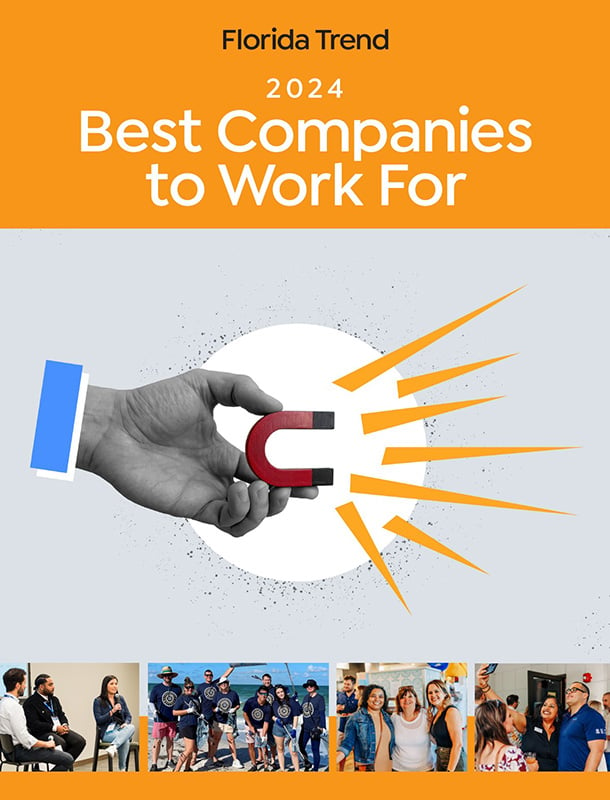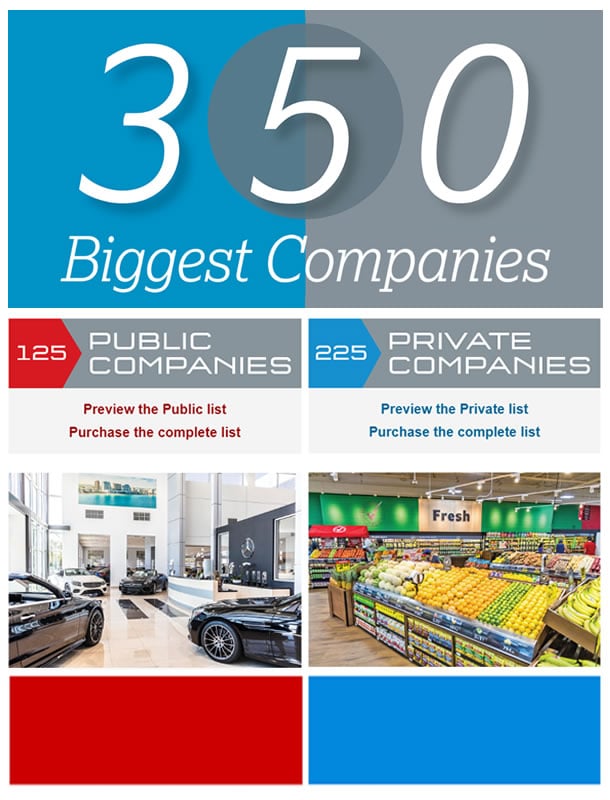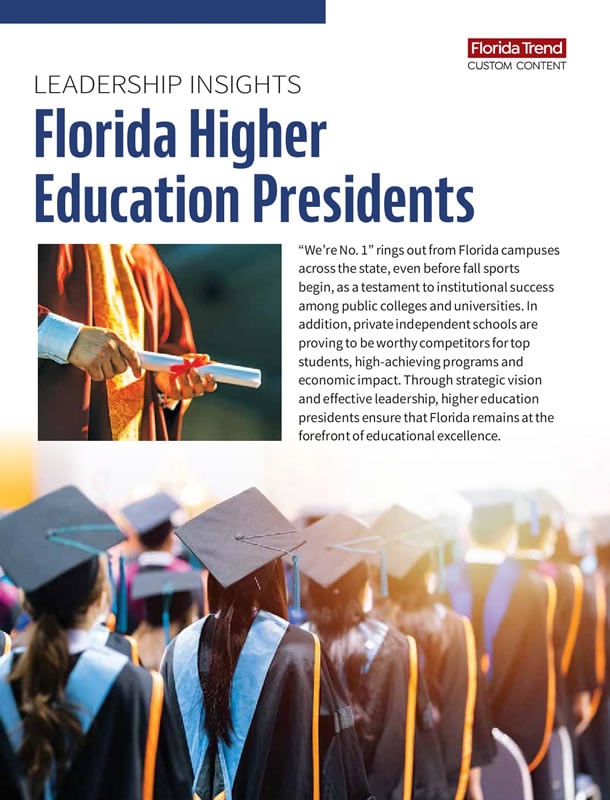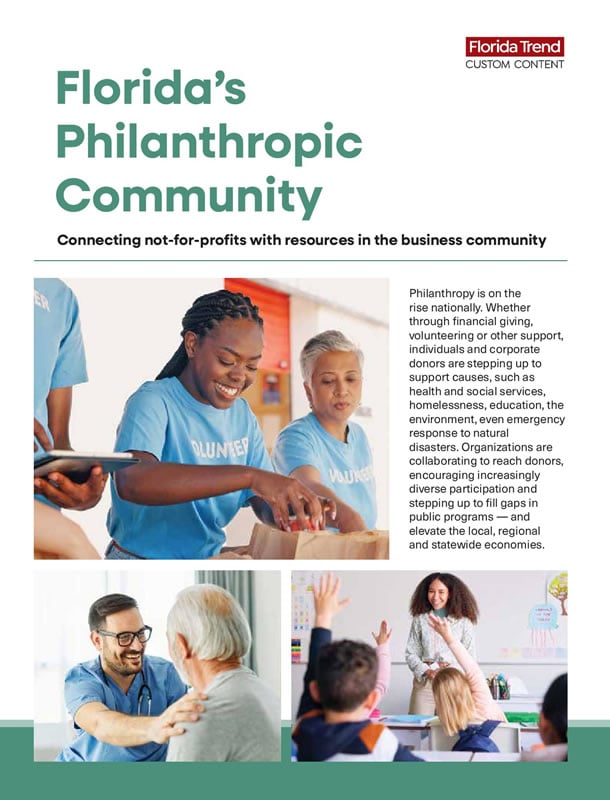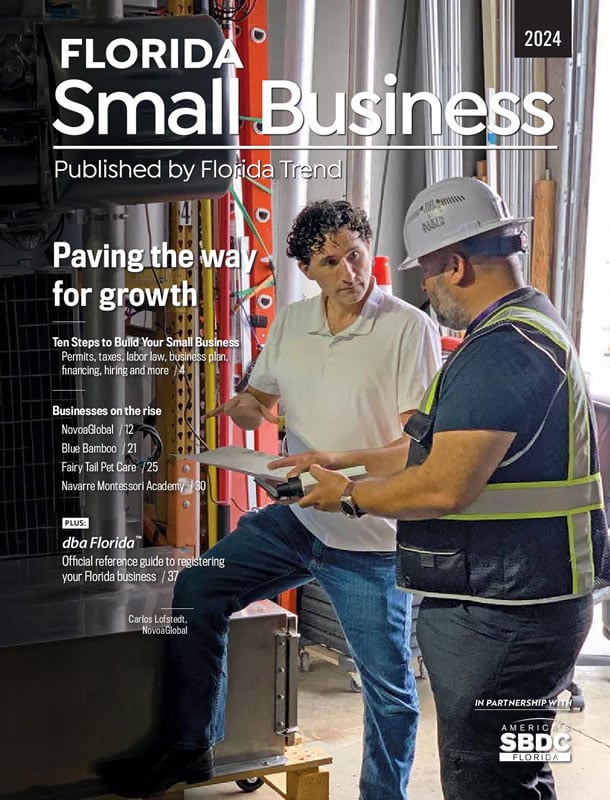"Finding venture capital is very much a networking challenge," says Jeanne Becker, executive director of the Florida Venture Forum, a Coral Gables-based non-profit organization that helps entrepreneurs find sources of venture capital.
Most small-business owners don't hobnob with venture capitalists, so they need to use whatever connections they do have to access people who can be a source of funds.
Attorneys, accountants or business consultants usually have connections that entrepreneurs lack. And a reference from one of these service providers is held in high regard by most VCs. That's why Becker encourages entrepreneurs to build relationships with them.
Chris Cogan used networking when he sought financing for GoCo-op, a Maitland provider of web-based procurement systems. Through his corporate counsel -- a well-known securities attorney -- Cogan got an introduction to a senior officer at SunTrust Bank, who in turn introduced him to a Wall Street insider. "He took me to New York and spent about six to eight weeks with me up and down Wall Street," Cogan recalls.
By leveraging his contacts, Cogan was able to raise $32 million in venture capital funding in six months, all stemming from the initial contact with his attorney.
What do investors look for? Management is the key, experts say. "Surround yourself with Grade-A people," suggests Richard Q. Fox, president of Orlando-based Central Florida Innovation Corp. (CFIC), a resource for entrepreneurs seeking capital. A highly visible insider lends credibility.
And whom do you approach -- angels or venture capitalists? Angels invest in early-stage companies, typically within their own area of expertise. Under SEC rules, angels are accredited investors, those whose net worth is greater than $1 million or who earn more than $200,000 per year.
Angels typically invest up to $500,000 in a venture and receive a chunk of common stock. They seek returns of 40% to 100% per year.
Venture capitalists are typically institutional investors who put up $1 million or more, receive convertible preferred stock and require a board seat. They also seek high returns and expect a company to provide them with a viable exit strategy -- a method of getting their investment back -- typically, either by taking the company public or merging it with another firm.
No matter how much money you're trying to raise -- or from whom -- the key to success is persistence. "Getting venture capital is almost like a full-time job," Becker says.
A Guide to Equity Funding
Initial funding for a company -- seed financing -- is frequently obtained from friends and family. This round of financing is commonly referred to as "Friends and Family Financing."
First-stage financing is sought by companies that have spent their seed financing and are seeking additional investment. It is usually provided by an angel.
Second-stage financing, usually provided by venture capitalists, funds expansion for a growing company.
Mezzanine financing is late-stage financing, usually to cover a major expansion of a company that is profitable or about to become profitable. It is frequently used to fund acquisitions.
Bridge financing is provided to a company that plans to go public in less than a year. It's often structured so the funds are repaid with the proceeds of the initial public offering.
Tapping Government Funds
Small Business Innovation Research Grants benefit both small businesses and the government.
By Robyn A Friedman
Companies that offer products and services with wide commercial appeal often attract the eye of private investors. But those involved in developing innovations -- unproven technologies, products or services that aren't ready for commercialization -- have little or no chance of obtaining private equity financing or bank loans.
Enter the federal government. Since 1982, the Small Business Administration has helped thousands of small businesses compete for federal research and development grants through its Small Business Innovation Research Program (SBIR). The program targets small businesses and helps to subsidize the research and development that is often beyond their means by requiring certain federal agencies to reserve a percentage of their R&D funds for small businesses.
Many companies in Florida, such as Dunedin-based Ocean Optics, owe their very existence to the SBIR program. Ocean Optics was formed in 1989 expressly so its founders could seek SBIR grant money to develop optical sensor technologies. From 1989 to 1992, the company received more than $1 million in federal grants from the U.S. Department of Energy. Since then, the company has commercially exploited the technology. It now has nearly $10 million in sales and more than 50 employees.
"There were no other sources of funding," says Scott Faris, the company's chief operating officer. "The company was started specifically to go after an SBIR grant."
To qualify for a grant, companies must have fewer than 500 employees, be American-owned and independently operated, and be for-profit. They must also employ the principal researcher for the project. Ten federal departments and agencies participate in the program and are required to set aside a portion of their R&D funds to award to eligible small businesses.
The SBIR program is a win-win proposition for both small business and the government. The government gets access to innovative ideas that meet its specific research and development needs. Small companies benefit because they retain the right to exploit the technology commercially.
Ocean Optics found the program to be so successful that it's in the process of submitting proposals to seek new grants. "It really supplements our development budgets," Faris says. "It's a great way to go after advanced applications where a company would not have the resources to pursue them on its own."
SBIR Funding: Three-Phase Program
Phase I is the startup phase. Awards of up to $100,000 are made for about six months to support exploration of the technical merit or feasibility of an idea or technology.
Phase II awards of up to $750,000, for up to two years, are used to expand Phase I results. During this time, the research and development work is performed, and the developer evaluates the potential for commercialization. Only Phase I award winners are considered for Phase II.
Phase III is the period during which Phase II innovation moves from the laboratory into the marketplace. No SBIR funds support this phase. The small business must find funding in the private sector or other non-SBIR federal agency funding.
Help on the Web
Small Business Innovation Research Program (SBIR)
This highly competitive grant program encourages small businesses to develop new technologies and gives them the opportunity to benefit from commercialization of those technologies. Businesses must meet certain criteria to participate. Ten federal departments and agencies provide R&D funds for small businesses that qualify.
Small Business Technology Transfer Program (STTR)
This program is similar to the SBIR program, except that five federal departments and agencies reserve a portion of their R&D funds to award to small business/nonprofit research institution partnerships.
The Accidental Entrepreneur
Julie Chin just wanted to remodel her kitchen.
Along the way, she stumbled upon a niche.
By Amy Welch
The wife of a family practice physician in Bradenton, Julie Chin wanted to be a full-time mother and had planned to adopt a baby girl from China in 1997. While waiting for instructions from the adoption agency to leave for China, she began remodeling her kitchen to pass the time. Chin couldn't find any cabinet knobs she liked until she noticed one night that some amethyst stones she had in a bowl matched her kitchen decor perfectly. She turned the stones into cabinet knobs -- and fell into a business opportunity.
Chin's friends and family raved about the new knobs and wanted their own. Before she left for China to get her daughter, she found a stone supplier and put a Natural Knobs catalog of about 100 stones on her website -- www.naturalknobs.com. She returned to Bradenton three weeks later to find dozens of e-mail messages from people wanting the stone knobs. Chin felt overwhelmed but searched for manufacturers and began filling the orders as a hobby.
Today, her company sells one-of-a-kind semiprecious gem, stone, wood, stained glass and fossil cabinet knobs. After three years in business, Chin, 32, has more than 700 custom-made knobs for sale from $14 to $65 each, with most selling for about $15. The company's showroom in downtown Bradenton seems more like a meditation center; water trickles from fountains, and soft, relaxing music buffers noise from outside.
Chin is financing the business with about $200,000 from her husband and with two small-business loans. She says the company pulled in about $50,000 in revenues last year. And while it has not turned a profit yet, more than 300 companies worldwide sell the knobs. Three companies have offered to buy out her business. Chin also turned down offers from Lowe's, Home Depot and Builders Choice to sell the products. She says she wants to grow her business but at her own pace, keeping the business more personal and the products unique.
Chin wrote her first business plan in January, projecting that she'll increase revenues by 300%, or between $100,000 to $150,000. The increase includes a plan to place television advertisements in 10 major U.S. cities.
Growth hasn't come without a downside. Once used to sleeping 12 hours a night, she now has to get by on as little as two. On those nights, she says, she reminds herself: "No couch potato is going to be the head of a big company." The store, she says, allows her close interaction with her customers -- and she's able to keep her daughter, Cobie, 3, close by. "Even if I started and failed, I'll be proud of myself, and I think Cobie will, too."
Finance: Leveraging Venture Capital with Debt
The state's tech sector will get a boost when Silicon Valley Bank opens a Florida office this fall.
By Barbara Miracle
Most banks welcome most companies that walk through the door, eager to offer them checking, savings, CDs, loans and other traditional bank products. Silicon Valley Bank, on the other hand, restricts its focus to serving venture capital-backed technology companies that have already received significant equity investments. "We will come in to leverage the venture capital with debt," says Jeff White, a Silicon Valley Bank executive who has been scouting a location for a Florida office. He adds, "We look for companies in software, telecommunications, semiconductor, computer and peripherals, and we look at biotech companies. Florida has a sprinkling of all of those."
Silicon Valley Bank, a Nasdaq-traded public company with $4.6 billion in assets, was founded in northern California in 1983 to aid emerging technology companies. When SVB opens a Florida office around Labor Day, the move will provide the state's tech companies with a financing option already available in high-tech centers from Silicon Valley's Sand Hill Road to Austin's Silicon Hills.
SVB focuses on high-quality companies with unique products and services. Most of the bank's clients come by way of referral from the tight-knit venture capital network of attorneys, accountants, venture groups and angel investors. The idea is that tech companies rely heavily on venture capital to finance "soft assets" such as hiring management talent. But they also need money for working capital and equipment, and that's where SVB comes in. The bank offers lines of credit, equipment financing and a host of other products including traditional checking and savings accounts.
Today, SVB has about 8,000 technology clients and 23 locations around the nation, in tech centers such as Austin, Wellesley, Mass., Atlanta and, most recently, North Carolina's Research Triangle. Two dozen or so Florida companies already do business with the bank. "The southeast U.S. is the fastest-growing area for the bank," says White.
Tampa, Orlando and south Florida have all courted White, who as of early June had yet to make a decision on the bank's location.
Deal Flow
Celebration-based Youknowbest.com hasn't yet formally launched its comparison shopping website, but already it has raised $23 million in venture funding. The company, led by former Microsoft manager Robert Wight, secured $20 million from Aweida Ventures Management of Boulder, Colo., to build its website, create the technology and launch the service. In the spring, Youknowbest.com brought in $3 million in a second round of venture funding from Sarasota-based New South Ventures and Aweida.
WildCard Systems, a Sunrise-based company that recently changed its name from ClaimCard, received $18.375 million in a third round of venture capital financing in March. Investors include Palo Alto, Calif.-based Sutter Hill Ventures, Greenwich, Conn.-based Greenwich Street Partners and E. W. Blanch Co. of Dallas. WildCard is a developer of electronic prepaid credit cards.



